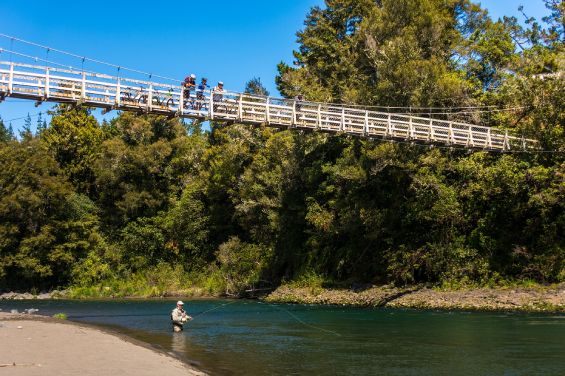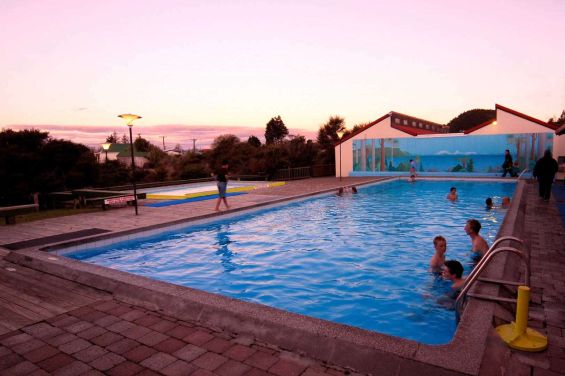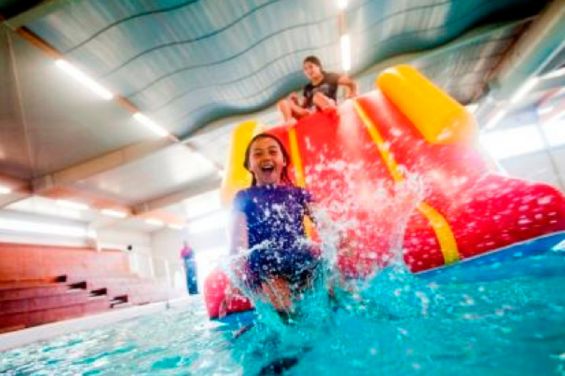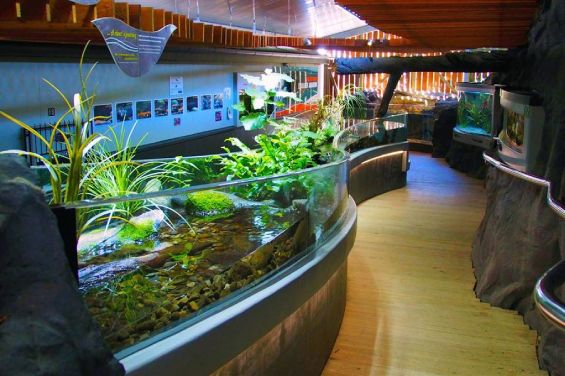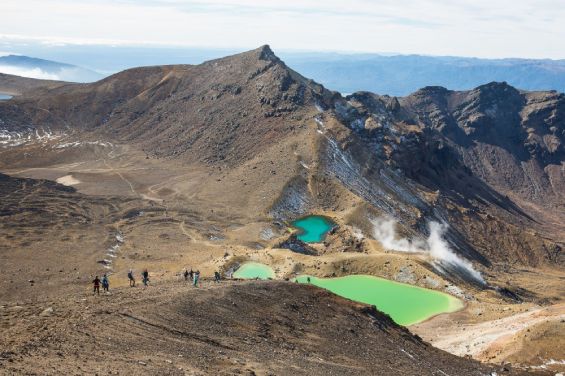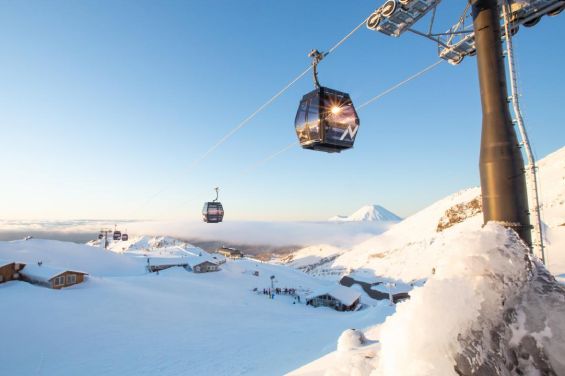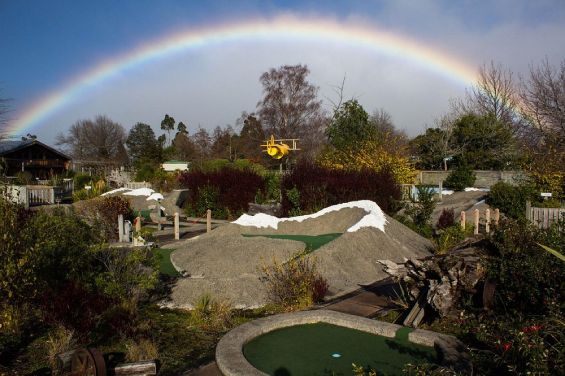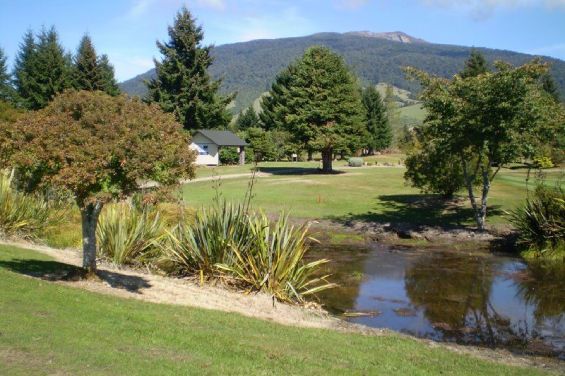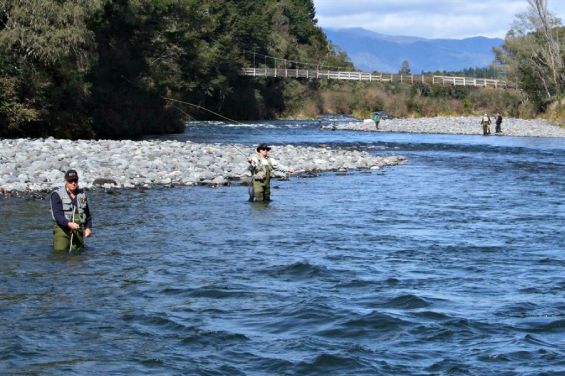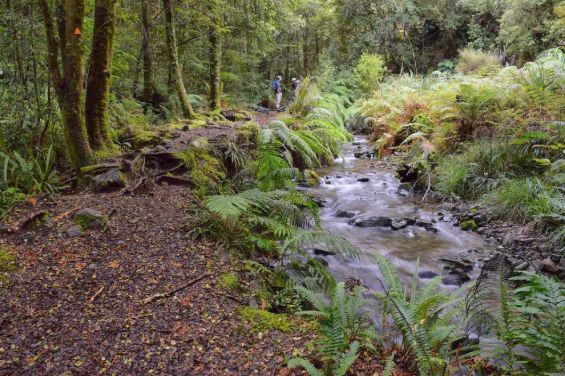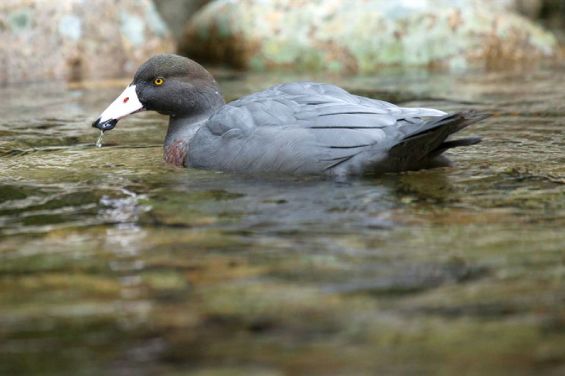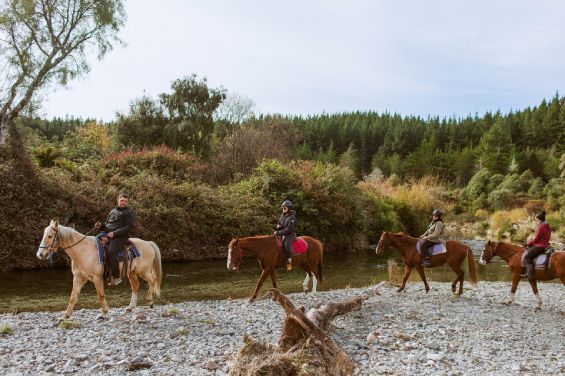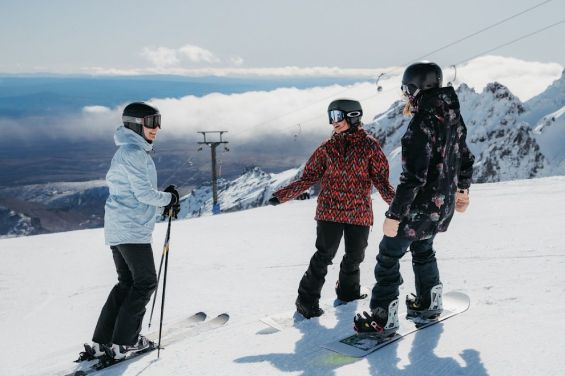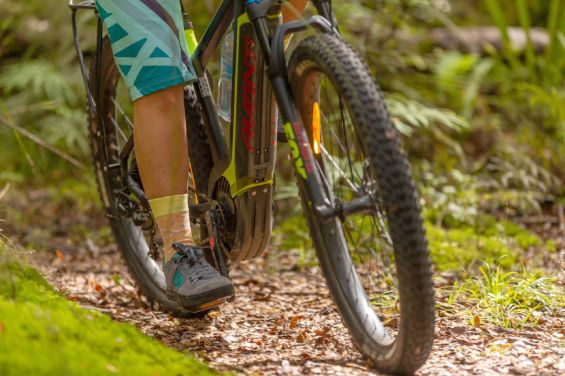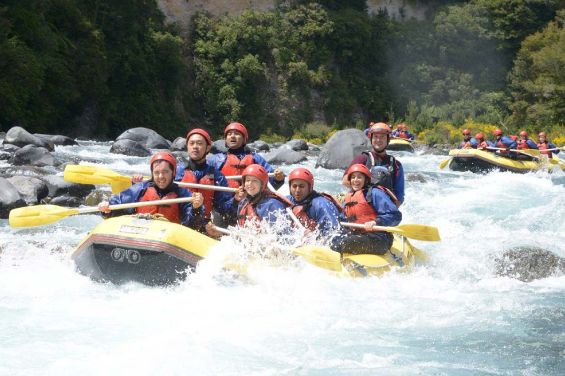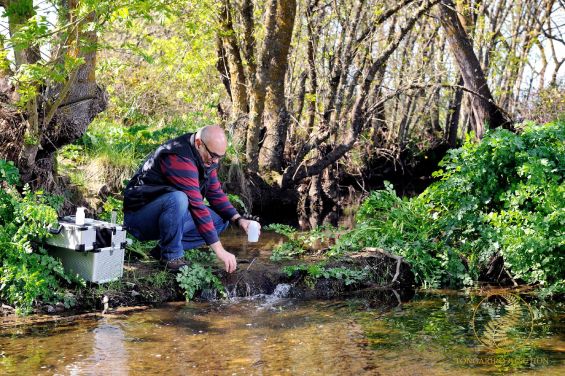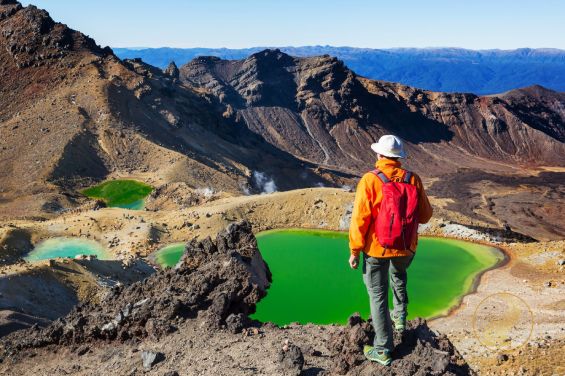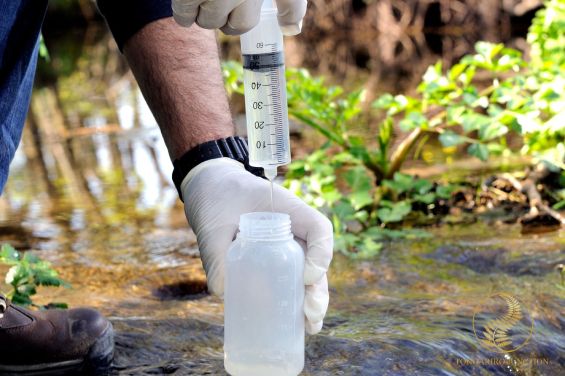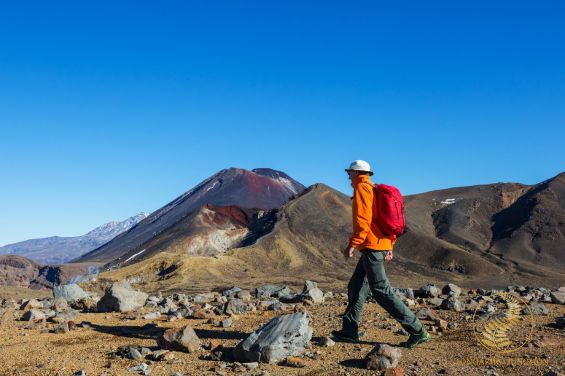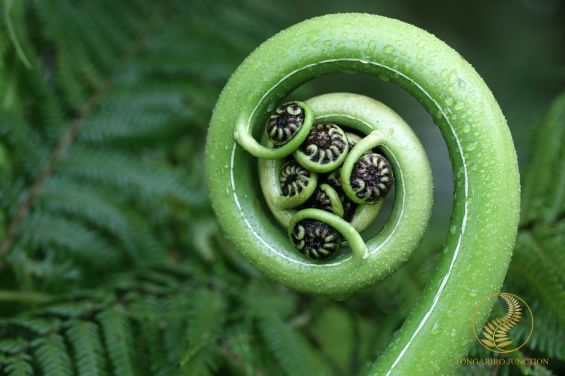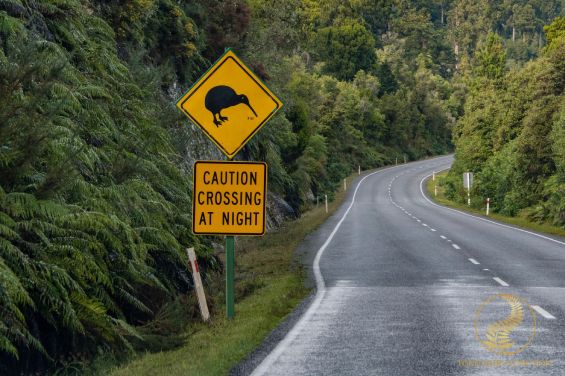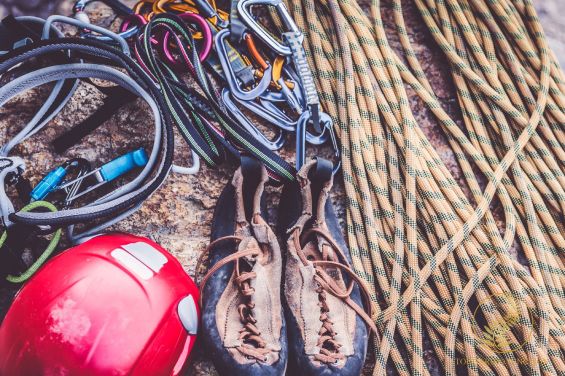Turangi is the ultimate location to base yourself while exploring the Central Plateau and Southern Lake Taupō region. Whatever you are up to or in to, you can find it here. Turangi is famous for trout fishing, especially along the Tongariro River and its tributaries, which draws anglers from around the world all year long. Hire a guide or give it a go yourself. Various hiking and mountain biking trails are either in, or near, Turangi. If you need to rent bikes or e-bikes, we have several operators that accommodate individuals and groups. The world famous and iconic Tongariro Alpine Crossing track end, where you can catch a shuttle to the start, is just 20 mins from Tongariro Junction. If the weather is uncooperative on the date of your stay, we can recommend various other tracks that will make your stay memorable. Educators can find a wealth of learning opportunities in this region too including lessons in volcanology, ecology and biodiversity, geography and earth sciences, freshwater science and sustainability as well as outdoor education and leadership. Visitors can enjoy a peaceful, laid-back atmosphere at Tongariro Junction in Turangi. Some come specifically to soak in the natural mineral pools at Tokaanu which is just 5 minutes' drive from our property or embrace the beauty and serenity of Lake Rotopounamu – just 10 mins from us. With its scenic surroundings and friendly community, Turangi is a perfect base for exploring or just to take a break in your journey.
Attractions
Tongariro River
The Tongariro River, which runs through Turangi in New Zealand's central North Island, is a world-renowned trout fishing river and a must-visit for any angler. Managed by the Department of Conservation as part of the Taupō Fishery, the river offers excellent fishing for both rainbow and brown trout, with peak spawning runs occurring from late autumn through winter. The river is divided into lower, middle, and upper sections, each offering distinct fishing experiences – from the easily accessible pools and swing bridges of the middle Tongariro to the more remote wilderness stretches upstream. Anglers typically use nymphing or wet-fly techniques, with summer months also allowing for exciting dry-fly action during cicada and mayfly hatches. A valid Taupō fishing licence is required, and regulations include a daily bag limit of six trout and a minimum size of 35cm. While wading is common, river flows can change quickly due to upstream dam releases, so caution is advised. With stunning scenery, rich birdlife, and over 40 named fishing pools, the Tongariro River is as much about the experience as it is about the catch. Try it out yourself with advice from the local fishing retailer Sporting Life or hire a guide for the ultimate experience.
Tongariro River Trail
The Tongariro River Trail is a standout walking and biking trail offering a scenic and accessible way to explore the beauty of the Tongariro River which runs through Turangi. This well-maintained walking and cycling track winds through native bush, across swing bridges, and along the river's edge, providing panoramic views of the crystal-clear waters and surrounding bush and farmland.
Popular among hikers and cyclists the river trail features numerous lookouts and picnic areas, making it perfect for a leisurely day outdoors with the family. Birdwatchers will also enjoy spotting native species that thrive along the river corridor. The native Whio (Blue Duck) can be spotted along the trail at various times of the year as there is a healthy population due to conservation efforts and trapping.
While the Tongariro River is renowned for world-class fly fishing and thrilling Grade 3 white-water rafting, the trail offers a more relaxed way to experience this iconic landscape. Whether you're pedaling through the forest or strolling beside trout-filled pools, the Tongariro River Trail is a must-do for nature lovers and outdoor adventurers on any visit to Turangi. While the full trail is around 13-15km and takes a few hours, many visitors opt for shorter sections like the loop to the Tongariro River Lookout or the walk from Turangi town centre to the Red Hut Bridge, both of which offer scenic views and take about an hour. These walks are family-friendly for both cycling and walking and easily accessible from town.
Tokaanu Thermal Pools and Walk
Soak and recover in the natural mineral waters of Tokaanu Thermal Pools after exploring the area, tackling the Tongariro Alpine Crossing or apres-ski from one of the area skifields, Whakapapa or Turoa. The continuous supply of hot water and steam vents have been used for generations for communal cooking, and dyeing of traditional clothing but the hot water is harnessed here to also soothe the body. Share in this tradition by having a therapeutic and relaxing swim at the pools. The people of local Māori tribe Ngāti Kurauia have lived alongside the Tokaanu Stream and thermal area since the 16th century.
Tokaanu Thermal Pools are located at the southern end of Lake Taupō in the village of Tokaanu, just 5 minute's drive from Turangi. Hours of operation and availability of private thermal pools and the large outdoor thermally heated pool can change so be sure to check for updated information.
While exploring the area be sure to also visit the Tokaanu Thermal Walk which starts at the pool entrance. It's a short walk through a natural thermal area with footbridges and pathways to guide you through this 20 minute, wheelchair and family friendly walk. See steaming hot mineral pools set in sinter basins, and spluttering mud pots amongst attractive native bush.
Rainbow trout can often be seen here in the cold Tokaanu stream that flows beside the thermal area.
Turtle Pools Aquatic Centre
Turtle Pools Aquatic Centre is located in Tūrangi and is a vibrant, family-friendly aquatic centre perfect for fun, fitness, and learning any time of the year. The fully enclosed facility maintains a comfortable 24°C indoor temperature and houses four heated pools: a 25m lane pool (1.1m deep) for serious swimmers, a 1.8m "bombing" and aqua-aerobics pool complete with a thrilling 3.5m aquatic climbing wall, plus a learner's pool (0.9m deep with a disability hoist) and a toddlers' pool – ideal for little ones.
Lane swimming is available year-round, with swim and water-safety lessons catering to all ages. The centre includes two family/disability changing rooms with hot showers, and a shaded eating area for families or birthday parties.
Entry starts from just $5.50 for adults and $3.50 for children (with concession and family passes available). Open daily – except Christmas Day – with extended hours on Tuesdays, Monday to Thursday from 8:30am, and weekend entry from midday, Turtle Pools offers a warm, welcoming hub for locals and visitors alike.
Tongariro National Trout Centre
The Tongariro National Trout Centre, just 4km south of Turangi, is a delightful blend of education, conservation, and fun for visitors of all ages. Nestled in native bush along the Tongariro River, it combines a freshwater museum, fly-fishing memorabilia, hatchery and hatchery displays, and a stunning Genesis Energy aquarium showcasing native freshwater species – including giant kōkopu, kōura, tuna, and koaro.
An underwater viewing chamber lets you watch wild trout in action as they migrate and spawn in the river flowing through the centre. Kids will love the dedicated fishing pond, where children aged 5-16 can hook, weigh, fillet, and even smoke their own rainbow trout during the school holidays.
Along with beautiful river walks, birdlife and interactive exhibits on trout ecology and conservation, the centre offers a rich, hands-on experience in freshwater sustainability and Kiwi fishing history.
Tongariro Alpine Crossing
The Tongariro Alpine Crossing is a world-renowned, one-day hike of nearly 20km through the heart of Tongariro National Park. The start location is at Mangatepōpō (1,120m) and the track ends at Ketetahi (760m) with the highest point at Red Crater (1,886m). From Tongariro Junction in Turangi you can arrange a shuttle – either a one-way service from Ketetahi carpark or a return run from a local shuttle operator.
Depending on the time of the year, and the weather conditions, shuttles can start pick-ups as early as 5am from Turangi. In good conditions, most hikers complete the crossing in 6-8 hours, though alpine weather can change suddenly – snow, wind or freezing temperatures are possible even in summer – so sturdy footwear, waterproof and warmth layers, sunblock, 2-3L water, snacks, and a map/first-aid kit are essential.
Sky Waka Gondola
The Sky Waka Gondola, located at the top of Bruce Road on Mount Ruapehu, is a must-do for spectacular alpine sightseeing. It is the longest gondola ride in New Zealand stretching 1.8km and climbing 390m from the top of Bruce Road (about 1,630m) to the Knoll Ridge Chalet (2,020m). It operates year-round, though opening hours depend on weather conditions on the mountain. The 48 glass-encased cabs seat 10 people each and can accommodate ski gear in the winter months. The ride takes about 12 minutes but offers breathtaking 360-degree vistas over waterfall-laced valleys, ancient lava fields, Pinnacles Ridge, and neighbouring volcanoes – Tongariro, Ngauruhoe, and even distant Mount Taranaki on a clear day.
At the top, you'll arrive at the Knoll Ridge Chalet, New Zealand's highest eatery. Perched at 2,020m, the chalet offers a variety of food services depending on the time of year. This is also the trailhead for six well-waymarked walking tracks varying from short 20-minute strolls to 2.5-hour hikes. Tickets can be purchased at the ticket office on site. Skiers and snowboarders will enjoy the fast access to upper ski terrain during ski season (approximately July to October).
Activities
Adventure Mini-Golf
Southern Lake Taupo Adventure Mini Golf is a fun way to spend a couple of hours during your stay in Turangi. This is quite a challenging 18-hole course based on the terrain of the Central Plateau! Volcanoes, canyons, rivers – all have to be overcome before you reach the last hole. Located off Ohuanga Road in Turangi, near New World Turangi, this course will surprise you with its creative and clever course holes highlighting many local attractions and features such as River Rafting, Whakapapa Ski field, Tokaanu Thermal Walk, Chateau Tongariro and Tongariro National Trout Centre.
Golfing
- Turangi Golf Course
The Turangi Golf Course is 18 holes, par 72 from both tees. The course is reasonably flat with water features and the colours in autumn from the many old English deciduous trees is stunning. - Taumarunui Golf Course
This course is only 45 mins away from Turangi. Rated as one of the Top 50 Courses in NZ it is a sure "must do" on the golfers' agenda and could be squeezed in during a trip to the area. The Tarrangower course is a quality layout and all-weather course, well regarded and enjoyed by visitors and local golfers. This tree-lined and open parkland course contains a variety of attractive holes and pleasant features which provide a great test of golf. - Kinloch Golf Course
While in the area or heading on from Turangi, travelling north through Taupo, golfers should stop by at Kinloch's Golf Course which was designed by champion golfer, Jack Nicklaus. This par-72 layout weaves through rolling tussock terrain and rugged farmland, delivering panoramic views over the lake and surrounding hills. It's New Zealand's only 18-hole Jack Nicklaus Signature golf course and is just a 1 hour drive from Turangi.
Fishing
Trout fishing on the Tongariro River in Turangi and Southern Lake Taupō is world-renowned, drawing anglers from around the globe for its pristine waters, abundant fish, and stunning backdrops. The Tongariro River, which flows into Lake Taupo, is one of New Zealand's most iconic trout fisheries. It's particularly famous for its large spawning runs of rainbow and brown trout, especially in the winter months (June to October). The three sections offer different challenges and experiences.
Lake Taupo itself is also an outstanding trout fishery, with opportunities for trolling, jigging, harling, and shoreline fly fishing and is easily accessed from one of many boat ramps in the Southern Lake Taupō bays and villages.
Fishing in both Lake Taupo and the Tongariro River requires a Taupo Fishing Licence, which is separate from New Zealand's standard Fish & Game licences. The fishery is managed by the Department of Conservation (DOC), and licences are available for different durations including 24-hour, week, and full-season options. Anglers should familiarize themselves with regulations around trout fishing including size and quota permitted. Additionally, a separate access permit is required to fish Lake Rotoaira, which is on private land but popular for fly fishing.
Turangi is the main hub for Tongariro River anglers, with abundant accommodation, local guides, tackle shops, and gear rental. It's often referred to as the trout fishing capital of the world. Whether you're a seasoned fly angler or a newcomer to freshwater fishing, the combination of Lake Taupo's deep waters and the Tongariro River's dynamic flows offers something truly special. Just make sure to secure the appropriate licence, follow local regulations, and check the river or lake conditions before setting out.
Hiking
Turangi is a fantastic base for a range of short walks that showcase the area's natural beauty, from riverside trails to lake circuits and native forest loops. With options ranging from 20 minutes to eight hours, all easily accessible by car, it's a great destination for casual walkers and outdoor lovers alike.
- Tongariro River Trail is a well-formed walking and cycling route that follows the river through native bush, offering several access points and loop options.
- Pukawa Bay Walks on the shores of Lake Taupō offer beautiful lake views and lush native forest. The Pukawa to Omori track is a gentle 1.4 km one-way route through bush to a quiet lakeside reserve, while the shorter Pukawa Bush Walk is a 1.2km loop that climbs slightly to a lookout above the village, great for birdwatching and peaceful forest immersion.
- Urchin Campsite and Forest Loop Walks offer tranquil short walks through native forest. These include an easy 1 km loop from the campsite, or a slightly longer 1.5km return trip to the Pillars of Hercules, a suspension bridge spanning a dramatic gorge over the Tongariro River.
- Umikarikari Track or the Urchin Track in the Kaimanawa Forest Park are also close by and offer a quieter and more challenging trail for the keen hiker. These hikes can take 8 to 16 hours.
- Lake Rotopounamu is a local favourite hiking trail located just off SH47 on the way to National Park, this 6km loop takes about two hours and circles a serene crater lake surrounded by ancient podocarp forest. The trail is well-maintained, shaded, and features sandy beaches, picnic spots, and plenty of native birdlife, making it ideal for a half-day nature outing.
- Waihohonu Hut in Tongariro National Park, this mostly flat, 5.5 hour return trip will take you to the bottom of the Tongariro National Park mountains. The Waihohonu Hut has a framed picturesque view of Ngauruhoe, while the crystal clear Ohinepango Springs and the historic museum piece, Old Waihohonu Hut can complete a satisfying in and out trip. Access off of State Hwy 1.
Bird-watching
Bird-watching around Tūrangi and Tokaanu offers a wonderful variety of species and habitats including fast moving mountain rivers and serene lakeside reserves to geothermal bushwalks and wetlands. The Tongariro River Trail is a prime spot sighting the rare Whio (Blue Duck) – these endemic torrent-specialist ducks are regularly seen along the fast-flowing sections of the Tongariro River, especially near Major Jones Bridge and even near State Hwy 1 bridge crossing. Sightings are common even from easy walks along the riverbank. You are also likely to spot New Zealand Fantail, Tui, Bellbird, Welcome Swallow, Great and Little pied Cormorants, White-faced Heron, New Zealand Harrier, Grey Warbler, Whitehead, Silver Eye, New Zealand Wood Pigeon and the North Island Robin along with various other bird species.
At the Tokaanu boat ramp and wharf, wetland species like black swan, grey duck (Pacific black duck), Australasian shags, dabchick, and possibly fernbird are seen mirrored in the lake and river delta. The wetlands around Tokaanu are also a migratory path popular with many species including the Spoonbill, Bar-tailed Godwits, Pacific golden Plovers and Red Knots. It is part of the East Asian-Australasian Flyway so bird-lovers will love ticking off some rare species from Turangi.
Horse Trekking
Horse trekking around Tūrangi is a magical way to experience the region's native forests, crystal-clear rivers, and stunning volcanic views and Korohe Horse Treks is the standout operator in the area. Operated by local couple John and Sammii, Korohe runs a variety of guided rides to suit all levels, ages, and durations. Their most popular trek is the Enchanted Forest & River Ride which winds through native bush, leads you across multiple gentle crossings – and even into the Waimarino River, where the horses swim, often with trout visible beneath their hooves.
Beginners and children as young as 5 are welcome, and you can opt for a more adventurous "Need for Speed" version if you'd like faster gallops through the forest. Korehe horse trekking offer longer rides into the Kaimanawa foothills, where you can explore native timberland and open ridges. Riders don't need prior experience. The horses are well-trained and guides provide friendly support.
Located about 10 minutes' drive from Turangi, be sure to book in advance as this is a popular attraction as they offer an unforgettable mix of nature and adventure.
Skiing and Snowboarding
Basing yourself in Tūrangi for skiing or snowboarding on Mount Ruapehu is a smart and relaxed alternative to staying on the mountain itself. Just a 45-minute drive from Whakapapa Ski Area, Tūrangi offers a quieter, more affordable atmosphere with all the essentials – accommodation, cafés, supermarkets, and natural attractions – without the crowds of the ski villages. Whakapapa, located on the north-western slopes of Mount Ruapehu, is New Zealand's largest ski field, featuring over 65 trails for all skill levels, from beginners in the purpose-built Happy Valley area to advanced skiers and boarders tackling the volcanic terrain of Black Magic and the Pinnacles. The Sky Waka Gondola, a major lift attraction of its own, provides quick access to mid-mountain and operates year-round.
In winter, 4WD or snow chains may be required, and weekend parking must often be reserved in advance through Whakapapa's online booking system. Shuttles also run from Tūrangi during peak periods, making it easy to leave the car behind. The ski season typically runs from early July through October, with snowmaking helping to extend the lower slopes' viability. If you need to hire gear, you are best to hire in National Park Village or when you arrive at Whakapapa.
Non-skiers in your group have plenty to explore – short bush walks, world-class trout fishing, mountain biking, and even birdwatching. The town is also well suited to families or those wanting more space and privacy than alpine lodges typically provide.
Biking
If you're looking to explore the Tūrangi area by bike, there are excellent hire options and a range of local trails to suit all levels of mountain biking enthusiast. Hire a bike from AME, the Tongariro Naitonal Trout Centre or from Tongariro Mountain Bikes. There is a full range of mountain and e-bikes for hire in Turangi.
You can find guided rides and shuttle services to some of the region's best backcountry tracks, including Tree Trunk Gorge, Fishers Track, Old Coach Road, and the iconic 42 Traverse. One of the most accessible and enjoyable local rides is the Tongariro River Trail – a scenic, 15km loop graded as easy, perfect for families or casual riders and easy access from Tongariro Junction.
- Tongariro River Trail – 5-15kms, Grade 2 – winds alongside the crystal-clear Tongariro River, through native bush and open farmland, with highlights including swing bridges, trout pools, and a possible stop at the Tongariro National Trout Centre.
- Tree Trunk Gorge – 19kms, Grade 3-4 – a rugged ride through beech forest, complete with river crossings and technical terrain.
- 42 Traverse – 31-50km, Grade 3 – a challenging wilderness ride along old logging roads in the Tongariro Forest Conservation Area with views of the volcanoes of the central plateau, you'll encounter several steep climbs, rutted gravel, rocky sections, and four river crossings.
- Old Coach Road – 15kms one way, Grade 3 – on a mix of gravel, historic cobblestones, gentle climbs, and forest scenery, making it ideal for riders with some off-road experience but still accessible to many. Horopito is the starting point and it ends in Ohakune. Transfers are available.
- Kaimanawa Decent – 22-23km one way, Grade 3 – a downhill trail which starts at high alpine tussock country via helicopter drop and winds through beech forest, with approximately 800m of descending with some uphill sections. It's suited for intermediate to advanced riders who are comfortable in remote terrain.
The longer rides are best tackled in drier conditions and often require shuttle support. Tūrangi provides a fantastic base for mountain biking, and it also still close enough to the trails in and around Taupō to make Tongariro Junction, and Turangi, the logical place to stay on your mountain biking adventures in the central plateau.
River Rafting
Rafting the Tongariro River out of Turangi is a thrilling blend of Grade 3 white-water action, pristine backcountry scenery, and conservation-focused experiences. Tongariro River Rafting has been guiding adventures on this stretch of the Tongariro River since the late 1980s. With over 60 rapids to navigate on their Grade 3 whitewater rafting trip you will experience the thrill and action you would expect with all safety gear provided. Guests only need to bring swimwear and a towel. Expect on-river extras like hot chocolate, snacks, cliff jumps, plus chances to spot rare Whio (blue duck) and other wildlife.
They also offer a Family Fun Rafting option on gentler Grade 2 rapids – ideal for families with children as young as five, complete with optional cliff jumps, on-river treats, and a stop at the Tongariro National Trout Centre.
Beyond half-day runs, they also offer specialized outings like intimate guided Blue Duck tours with conservation education, raft-fishing trips, adrenaline-pumping Grade 4 whitewater rafting on select days and multi-day river expeditions. Tongariro River Rafting is a proud part of the Blue Duck Project, a predator-control initiative that has successfully doubled local Whio numbers on the Tongariro River.
Education
For Educators, your visit to Turangi and Tongariro Junction, along with the many opportunities for activities and local attractions, is also curriculum-rich, culturally significant, and a geologically diverse location for outdoor education.
Environmental Science
Tūrangi and the Central Plateau of New Zealand's North Island offer an exceptional outdoor classroom for environmental science studies, perfectly aligned with NZQA-level qualifications like NCEA and tertiary diplomas. Nestled on the volcanic plateau beside the Tongariro River and near native forest, hydroelectric schemes, trout fisheries, geothermal zones, and high-altitude ecosystems, the region provides diverse field settings ideal for hands-on learning.
Secondary students pursuing NCEA Level 2-3 Environmental Sustainability or Biology benefit from study programmes such as the Whenua Iti Outdoors Environmental Science Level 3 trade-academy-style course. This course includes multiple week-long blocks of field-based learning, cultural integration, and environment-led assessments, delivering up to 18 credits across Levels 2-3, all NZQA-accredited.
Students can gain environmental science knowledge, directly address NZQA criteria, and cultivate the investigative, analytical, and kaitiakitanga (guardianship) skills essential for careers in ecology, conservation, resource management, and iwi liaison roles.
Volcanology
A visit to Tūrangi and the Central Plateau offers an exceptional real-world laboratory for volcanology, making it an ideal setting for primary, secondary and even tertiary studies. The accessibility and diversity of volcanic landforms here make it a powerful catalyst for developing scientific observation, analytical skills, and culturally respectful kaitiakitanga.
Field excursions across the Taupō Volcanic Zone – encompassing Mt Ruapehu, Tongariro, and Ngauruhoe – grant students the opportunity to study eruptive stratigraphy, lahar deposits, tephra layers, fumaroles, and volcanic soils. The region's dynamic geology, including vents, craters, and mudflows, serves as an excellent outdoor classroom. A visit to the Whakapapa Visitor Centre will provide for an interpretive exploration of recent eruptions that also affected the area.
This region perfectly aligns with NZQA Learning Pathways: secondary students working toward NCEA Level 2-3 Environmental Science or Earth & Space Science can complete internal and external assessments by observing volcanic phenomena, mapping deposits, sampling soils, or evaluating volcanic hazards.
Freshwater Ecology
Tūrangi and the Central Plateau region offers a compelling backdrop for studying water systems and sustainability through both practical field experiences and pathways tied to NZQA qualifications. Tūrangi's wastewater treatment plant – one of the few in the Taupō District that discharges treated effluent into a constructed wetland before it flows into local streams and ultimately Lake Taupō – is going through essential upgrades, with both short-term fixes and long-term land-based discharge options currently under community and iwi consultation. This provides excellent case-study material for NCEA assessments around wastewater systems and resource consent processes.
In addition, students can explore the broader Central Plateau system via the Tongariro Power Scheme, where large-scale hydrologic diversion through tunnels and canals has significantly altered stream flows, sediment transport, and aquatic habitats. This infrastructure, built in the 1960s-70s, is central to applied discussions around hydrology, environmental impacts, kaitiakitanga, and the interactions between energy production and water stewardship.
Educators may arrange access to diverse water systems – from treatment wetlands to hydro schemes, from policy frameworks to monitoring real-world outcomes – helping them gain insights into sustainability science, resource governance, and culturally grounded environmental stewardship in line with NZQA and other learning goals.
Geology
This region offers an immersive showcase of New Zealand's dynamic earth processes and a perfect environment for curriculum-aligned learning.
Mounts Ruapehu, Tongariro, and Ngauruhoe (up to 2,800m) are active stratovolcanoes formed largely of viscous andesitic magma, periodically emitting lava and explosive tephra – perfect for studying rock types and eruption styles firsthand. In a geology field course setting, students can identify igneous rocks (andesite, ignimbrite, pumice), observe landforms shaped by both volcanic and erosional forces, and analyse volcanic deposits and lahar tracks such as Ruapehu's Whangaehu River mudflow aftermath.
DOC-supported field guides for Tongariro National Park empower students (Years 9-13) to conduct transects, record rock types, and sketch landforms – directly fulfilling NCEA geomorphology and volcanology standards doc.govt.nz. These hands-on experiences dovetail with NZQA learning outcomes, developing skills in observation, stratum interpretation, rock classification, plate boundary mapping, and process-explanation.
While staying in Tūrangi, educators can weave together foundational geoscience themes – plate tectonics, volcanism, geomorphology, rock classification, and landscape evolution – into a unified outdoor laboratory.
Conservation Biology
A visit to Tūrangi and the Central Plateau provides opportunity for a remarkable immersion in conservation biology, offering students direct access to real-world conservation efforts that align neatly with educational standards. Organisations like Project Tongariro, Operation Nest Egg, Whio Forever - Blue Duck Recovery run projects in the area, some through local businesses, and provide ample opportunity to gauge conservation efforts in the region. The area is a living classroom for conservation biology.
There are also DOC-led field resources like "Investigating Alpine Environments" for years 9-13, which support ecological monitoring, flora and fauna surveys, and action-based learning in Tongariro National Park. These kits include transect mapping tools, GPS, field guides, and activity templates – all designed for NZQA-aligned investigations into biodiversity, human impacts, and conservation management doc.govt.nz.
Moreover, school groups can participate in conservation field trips across the Central Plateau – such as checking pest traps around Lake Rotopounamu, banding native birds, or planting riparian buffer zones. The local Department of Conservation in Turangi helps organise learning opportunities through the Tongariro National Trout Centre and other conservation organisations.
Ecology and Botany
Within the unique volcanic landscapes around Tūrangi – including rubbly frost-flat heathlands, tussock grasslands, and emerging beech-podocarp forests – students can explore how altitude, soil composition, and climate influence plant diversity. Ecology field guides provided by DOC support practical investigations of ecological distribution, life processes, and interdependence in alpine and sub-alpine settings like Mangatepōpō and Whakapapanui walks, directly linking to NCEA standards.
Botanical richness across the Central Plateau – with only 20% native vegetation cover – has spurred extensive restoration efforts by councils and community groups. Planting guides from Waikato Regional Council encourage revegetation to enhance biodiversity, stabilize soils, and improve water quality in riparian zones. These initiatives offer hands-on learning opportunities: students can identify species, map vegetation zones, monitor plant survival, and engage in riparian planting projects that align with educational standards.
Flora and Fauna
Tūrangi and the Central Plateau boast an extraordinary array of flora and fauna, underpinned by the region's volcanic origins and varied habitats – from alpine tussock lands to beech-podocarp forests and riparian wetlands. The alpine and subalpine zones, such as those along the Tongariro Alpine Crossing, support specialized plant species like Celmisia spectabilis (the cotton daisy), mountain buttercups, eyebrights, and hardy gentians, all adapted to nutrient-poor volcanic soils and extreme weather. Native grasses and tussocks – such as Chionochloa, Poa, Festuca – and shrub plants like Coprosma and pohutukawa contribute to unique alpine ecosystems documented in N.Z.'s tussock grasslands. Within forested areas especially around Lake Rotopounamu and Pureora, lowland and montane forests feature podocarps (rimu, mataī, miro, tōtara) and broadleaf trees like tawa, with lush understories of ferns, mosses, and orchids, including spider orchids and leek-leaved orchids. These forests support diverse understory epiphytes, lichens, and ferns, offering incredible biodiversity from canopy to forest floor.
Faunal residents include threatened and endemic species. Forest and alpine birds such as kiwi, whio (blue duck), tomtit, robin, tūī, bellbird, and falcon are frequently encountered in appropriate habitats – alkaline streams, open tussock land, and native forests. Reptiles like the common skink, forest gecko, and alpine jewel gecko occupy rocky outcrops and forest floors, while numerous endemic invertebrates such as alpine grasshoppers, beetles, springtails (Holacanthella), and the striking blue fungus Entoloma hochstetteri contribute to nutrient cycling and ecological complexity.
Wetlands and stream corridors – such as those around Turangi's constructed wetlands – support waterbirds, mudfish, and various plant species. The presence of invasive weeds like broom and heather significantly alters arthropod and plant communities, triggering conservation actions aimed at preserving endemic biodiversity and habitat integrity.
This diversity is ideal for hands-on ecology, botany, and conservation biology studies.
Outdoor Education
Outdoor education across the Central Plateau – particularly around Tūrangi and Tongariro National Park – blends stunning volcanic landscapes, Māori cultural context, and adventure-based learning to enrich classroom curricula and personal development. The Sir Edmund Hillary Outdoor Pursuits Centre, located between Tūrangi and National Park, offers adventure training and experiential programmes that align with NZC Outdoor Education objectives – such as leadership, reflection, resilience, and connection to place – through activities like tramping, trekking, and team challenges. Complementing this, organisations like Tongariro River Rafting provide guided school-group expeditions – rafting, mountain biking and ecological talks focused on conservation and Whio (blue duck) habitat protection – delivering applied environmental and cultural learning in real-world settings.
DOC-led field days and educational field trips – such as exploring the rare volcanic dunes of Rangipo Desert or investigating alpine river systems – provide insight into ecosystem functions and biodiversity. Together with learning in nature resources from DOC, schools can run customised outdoor education experiences that align with NZQA Level 1-3 standards in health, physical education, science, and geography.
Overall, the Central Plateau's outdoor education landscape – from adventure centres and structured programmes to school-led field trips – creates a rich learning ecosystem where students develop practical skills, environmental understanding, cultural awareness, and personal growth, firmly rooted in their local volcanic environment.

